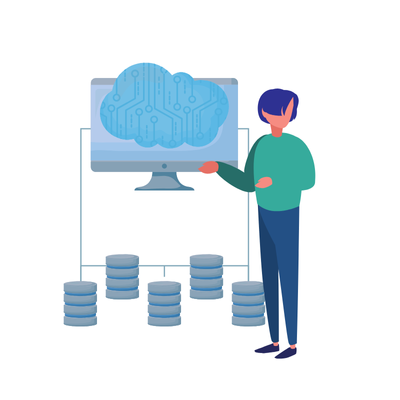In the fast world of trade, every business wants to stay ahead. Data is the new fuel. And when it comes to smart buying decisions, the GSTN purchase database is a game changer. It gives you access to verified details of purchases made by GST-registered companies.
But what does this really mean for you? Let’s explore how this kind of data helps businesses grow faster and make smarter choices.
A Simple Look at the GSTN System
Before diving into the database, let’s understand the basics. The Goods and Services Tax Network (GSTN) is the technology backbone of India’s GST system. It stores all the GST-related data like invoices, returns, purchases, and sales.
Every time a company files its return, it shares its purchase and sales details. Over time, this creates a huge pool of organized data. This is what forms the GSTN purchase database.
What Is a GSTN Purchase Database?
In simple words, it’s a record of purchases made by GST-registered companies across India. It contains:
Business names
GSTIN numbers
Invoice values
Vendor details
Date and type of purchase
Industry or segment
This data is collected from official filings like GSTR-2A, GSTR-2B, and GSTR-3B. When used wisely, this database helps companies track buying trends and build business strategies.
Why This Database Matters to You
You might wonder — why it is so important?
Well, it helps in many ways. First, it gives a clear view of business activity. Second, it helps you know who is buying what, when, and from where. And lastly, it helps in competitor analysis. Yes, you can actually see market movement by looking at purchase data trends.
How Businesses Use GSTN Purchase Insights
Here’s where things get interesting. This database isn’t just for accountants or auditors. It’s being used by:
B2B marketers to find potential customers
Suppliers to track demand
Distributors to spot active markets
Analysts to study buyer behavior
Retailers to find purchasing patterns
With the GSTN purchase data, you get a real-time peek into what’s selling and who’s buying it.
Not Just Numbers, But Real Patterns
While it may seem like a bunch of data points, the database shows clear patterns. For example:
Which sectors buy more in certain seasons
How GST returns reflect rising industries
Which states show high buying volumes
Whether purchases are going up or down
This helps businesses predict trends and plan better.
Helps Build Stronger Vendor Networks
Another great use? Finding reliable suppliers. The database helps companies check if a vendor is active, how often they are making sales, and whether their GST filings are regular.
With this kind of information, building trusted supplier networks becomes easier. And yes, it also helps avoid fake or inactive vendors.
Keeping Purchases GST Compliant
Let’s not forget — compliance is key. By cross-checking purchases through GSTN data, businesses can ensure they are claiming valid Input Tax Credit (ITC). This prevents penalties and saves money during audits.
So, instead of just depending on internal records, smart businesses now rely on this to verify everything.
Save Time with Data-Driven Purchase Decisions
In the past, many purchase decisions were based on guesswork. But not anymore. Today, data tells you what’s working.
By using GSTN-based purchase records, you can:
Shortlist active buyers in your industry
Check how often they purchase
Decide where to focus your marketing
Set better pricing and payment terms
It’s a smart way to reduce trial and error.
Useful Across Industries
No matter what business you run — pharma, logistics, textiles, or food — this data helps. Here’s how different sectors use this:
FMCG companies track demand regions
Textile firms study raw material buying patterns
E-commerce players analyze vendor growth
Consultants offer purchase data analysis services
Everyone benefits from understanding who buys what.
Be Careful While Using Gstn purchase database
Now, it’s important to use this data the right way. Here are a few tips:
Don’t use outdated records
Always check source authenticity
Never spam businesses with marketing messages
Respect privacy rules and regulations
When used correctly, it brings value. But when used poorly, it can hurt your brand image.
How Gstn purchase database Helps in Financial Planning
Want to plan your budget better? Or maybe forecast your raw material needs? This data helps with that too.
By tracking your past purchase patterns and comparing them with market data, you can manage your working capital in a smarter way. Plus, it helps in negotiating better deals with suppliers based on data.
GSTN Purchase Database vs Sales Data
Many people confuse purchase and sales data. While both are part of GST filings, the purchase database focuses on what a business buys — not what it sells.
This means it’s more useful for vendors, suppliers, and marketers who want to know where the demand lies.
A Smarter Way to Stay Ahead : Gstn purchase database
In today’s competitive world, acting fast is important. With access to this database, businesses can make quick, smart, and confident decisions. Whether it’s launching a new product or entering a new market, this data shows the way.
Final Thoughts: Gstn purchase database
The GSTN purchase database is more than just rows and columns. It’s a living record of how India’s businesses buy and grow. By understanding and using it properly, you can unlock new markets, reduce risks, and build stronger connections.
So, instead of guessing your next move — let the data guide you.
Our other related articles :
1.What is GSTN purchase database in India?
2.What does GSTN purchase database contain?
3.How accurate is GSTN purchase database data?

